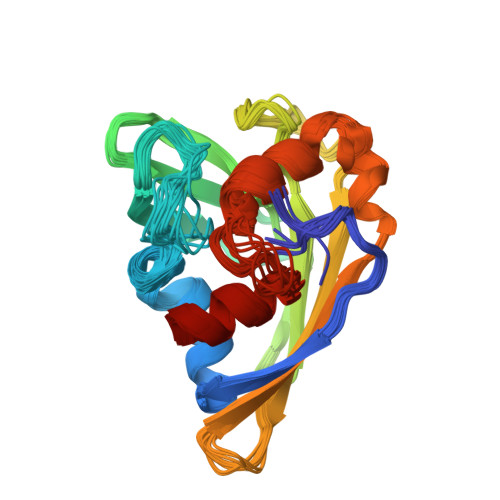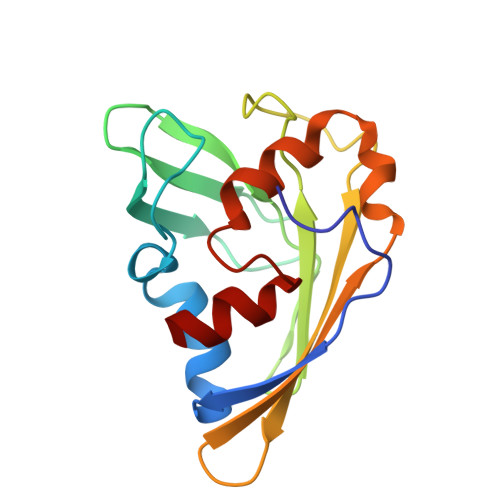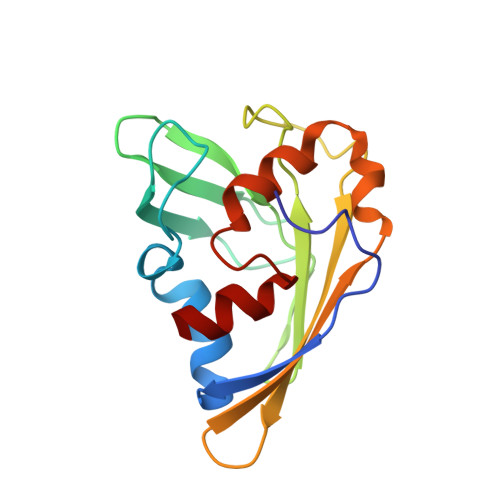Enzymology of Anthraquinone-gamma-Pyrone Ring Formation in Complex Aromatic Polyketide Biosynthesis.
Hou, X.F., Song, Y.J., Zhang, M., Lan, W.X., Meng, S., Wang, C.X., Pan, H.X., Cao, C.Y., Tang, G.L.(2018) Angew Chem Int Ed Engl 57: 13475-13479
- PubMed: 30151879
- DOI: https://doi.org/10.1002/anie.201806729
- Primary Citation of Related Structures:
5Z36, 5Z4E, 5Z4F - PubMed Abstract:
Aromatic-fused γ-pyrones are structural features of many bioactive natural products and valid scaffolds for medicinal chemistry. However, the enzymology of their formation has not been completely established. Now it is demonstrated that TxnO9, a CalC-like protein belonging to a START family, functions as an unexpected anthraquinone-γ-pyrone synthase involved in the biosynthesis of antitumor antibiotic trioxacarcin A (TXN-A). Structural analysis by NMR identified a likely substrate/product-binding mode and putative key active sites of TxnO9, which allowed an enzymatic mechanism to be proposed. Moreover, a subset of uncharacterized homologous proteins bearing an unexamined Lys-Thr dyad exhibit the same function. Therefore, the functional assignment and mechanistic investigation of this γ-pyrone synthase elucidated an undescribed step in TXN-A biosynthesis, and the discovery of this new branch of polyketide heterocyclases expands the functions of the START superfamily.
Organizational Affiliation:
State Key Laboratory of Bioorganic and Natural Products Chemistry, Center for Excellence in Molecular Synthesis, Shanghai Institute of Organic Chemistry, Chinese Academy of Sciences, 345 Lingling Road, Shanghai, 200032, China.
















